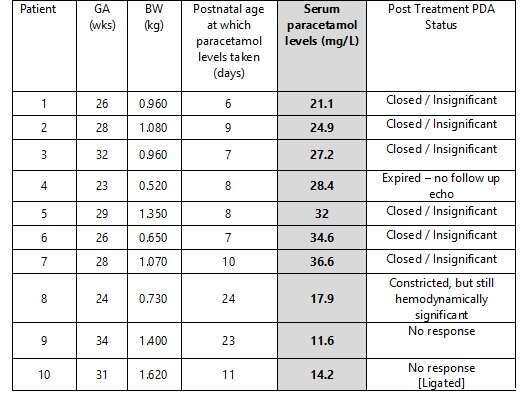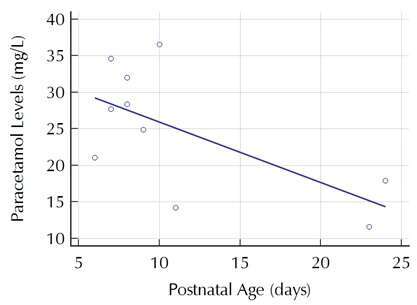
Paracetamol Serum Concentrations in Neonates Treated Enterally for Ductal Closure
Background: The role of paracetamol as a therapeutic alternative for the closure of the patent ductus arteriosus (PDA) in the preterm neonate is well documented. There are no clear dosage recommendations or target serum concentrations to date for this indication.
Objective: To examine whether serum paracetamol concentrations correlate with therapeutic efficacy and hepatic function.
Methods: In our institution, preterm infants (th dose in infants treated enterally for ductal closure. Liver transaminases are taken before and 24-48 hours after treatment. Follow up echocardiograms to assess response to treatment are performed on day 4 after initiation of treatment. Short term ductal response was defined as: PDA closed or insignificant; PDA constricted but still hemodynamically significant; no PDA response.
Results: Ten babies were studied. Serum paracetamol concentrations correlated (p<.01) with short term ductal response. No PDA in a baby with paracetamol levels <20mg/L closed in response to treatment. Paracetamol levels also correlated (p<.05) with postnatal age and did not with birth weight, gestational age, liver transaminases or serum creatinine.



Powered by Eventact EMS